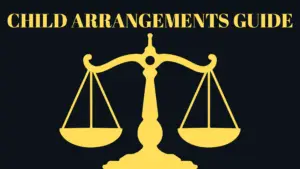Navigating Variation of Child Arrangements Orders: A Thorough Guide
After submitting an application to the Court, a Child Arrangements Order is issued.
- Navigating Variation of Child Arrangements Orders
- Understanding the Variation of Child Arrangements Order
- How to Vary a Child Arrangements Order
- Reasons for Varying a Child Arrangements Order
- Amicable Variation of Child Arrangements Order
- What Happens When Parties Cannot Reach an Amicable Agreement
- Factors Considered by the Court in Variations
- Enforcement of Child Arrangements Orders
- Conclusion: Balancing the Child’s Well-being
Understanding the Variation of Child Arrangements Order
Over time, it may become necessary to modify the arrangements within a Child Arrangements Order. This is particularly relevant if the existing arrangements are no longer suitable and require updates.
A Child Arrangements Order is a legally binding agreement that determines where children will reside and how they will have contact with the other parent.
These orders cover various aspects. They address the child’s primary residence and the frequency of contact with each parent. Additionally, they outline how the child can communicate with each parent during indirect contact while in the care of the other parent.
Each Child Arrangements Order is unique and tailored to the specific circumstances of the child. The court considers factors outlined in Section 1 of the Children Act 1989, making decisions with the child’s best interest in mind.
These factors include the child’s wishes and feelings, their physical, emotional, and educational needs. The court also considers the parents’ ability to meet those needs and any potential harm or risks to the child.
How to Vary a Child Arrangements Order
Modifying a Child Arrangements Order involves making changes to specific aspects of the existing order. It is common for individuals to seek amendments to the order if their circumstances change in the future.
However, the proposed changes should serve the best interests of the child.
Reasons for Varying a Child Arrangements Order
There are various reasons why one might seek a modification, including:
- Development of the children’s needs as they grow older. As children mature, their ability to travel between two homes may change, requiring a reconsideration of contact arrangements.
- Deterioration of a parent’s health. If one parent’s health declines, adjustments to the arrangements for the children residing with or having contact with that parent may be necessary.
- Breakdown in the relationship between a parent and the children. If there is a strain in the parent-child relationship, it may be necessary to reassess contact provisions. We’ve also published a guide on rebuilding strong bonds with your child if contact has broken down.
- Concerns about the children’s welfare while in the care of the other parent. If a parent has legitimate concerns about the children’s well-being during their time with the other parent, these concerns may necessitate changes. These changes would be made to the order to ensure the children’s safety and well-being.
- Relocation or change in work schedule. If one parent is moving or changing work shifts, the existing contact provisions may no longer be suitable.
- Practical difficulties in complying with the order. In certain circumstances, it may be challenging for one parent to comply with the terms of the order, prompting a need for reconsideration.
Amicable Variation of Child Arrangements Order
When seeking to modify an order, the initial step is to communicate with the other parent. The goal is to reach an agreement on the proposed amendments that are suitable for both parties’ specific circumstances.
In some cases, reaching an agreement amicably may not be possible. This can be due to strained relations or difficulties in finding common ground during discussions. In such instances, mediation can be a viable alternative. Mediation involves both parties discussing their concerns with an independent third party. The goal is to reach an agreement without resorting to court proceedings.
You can also explore our MIAM and mediation support service if you need help taking this route.
When the parents decide to modify child arrangements according to their specific circumstances, they need to create a draft Consent Order. This order outlines the new arrangements. Both parents must sign this draft Consent Order, and then submit it to the Court for approval.
Once the Court approves the new arrangements outlined in the Consent Order, the terms become legally binding.
What Happens When Parties Cannot Reach an Amicable Agreement
If reaching an agreement through amicable means is not possible, the parents must apply to the Court. The goal is to vary the existing Child Arrangements Order.
To do so, the applying parent/guardian must attend a Mediation Information and Assessment Meeting (MIAM). Afterward, they can prepare and file a C100 application with the Court. The Court processes and issues the application, scheduling the matter for a First Directions Hearing.
We provide full support preparing for your MIAM and C100 court application, ensuring you’re ready to take the next step.
At the First Directions Hearing, if the parties have reached an agreement, the Court will issue a modified Child Arrangements Order.
If the parties cannot reach an agreement at the First Hearing, the Court is likely to schedule additional hearings. The Court may involve the Children and Family Court Advisory and Support Service (CAFCASS) to carefully consider the children’s needs and wishes.
Factors Considered by the Court in Variations
The Court will thoroughly assess the proposed modification to ensure it is in the children’s best interests. This consideration involves reviewing the Welfare Checklist before issuing any new order.
If the Court determines that the proposed modification is appropriate, it will be approved. Subsequently, a new Child Arrangements Order reflecting the modified terms will be prepared.
If the Court believes that the modification would not be in the children’s best interests, the existing order will remain in place.
The Court primarily considers the child’s best interests when evaluating an application to modify a Child Arrangements Order. The preferences of the parents are secondary to this crucial consideration.
The Court takes into account Section 1 of the Children Act 1989 and considers the child’s wishes and feelings. Additionally, the Court evaluates whether the proposed changes pose any potential risks to the child’s safety or welfare. For instance, the Court may assess if either parent has a new partner with a criminal record or involvement in illegal substances. The Court also determines if both parents are capable of meeting the child’s needs under the modified arrangements.
The Court may rely on evidence provided by social workers or CAFCASS to assist in its decision-making process. It may also request a report from CAFCASS detailing how the modified arrangements might impact the child. The outcome of this evaluation may result in the original order remaining in place if it continues to serve the child’s best interests.
Enforcement of Child Arrangements Orders
If the original or modified order is not complied with, the Court has the authority to take enforcement action against the non-compliant parent.
An application for enforcement must be submitted to the Court, which will then review the allegations of non-compliance and assess whether a further hearing or advice from CAFCASS is necessary.
If there has been an unreasonable breach of the Court order, the Court has a range of powers at its disposal. These may include modifying the original Child Arrangements Order, imposing fines, or even imprisonment.
In conclusion, a Child Arrangements Order serves as a legally binding agreement that establishes residence and contact arrangements between children and their parent/guardians. However, there may come a time when modifications to the order are necessary to better accommodate changing circumstances.
When seeking to modify a Child Arrangements Order, it is ideal to reach an agreement amicably with the other parent. Through open communication and cooperation, parents can work together to create new arrangements that are in the best interests of the child. Mediation can also be a valuable tool to help resolve any disagreements and find common ground.
In cases where an agreement cannot be reached through amicable means, an application must be made to the Court. The Court carefully considers the child’s best interests, taking into account various factors outlined in the Children Act 1989. This includes considering the child’s wishes and feelings, their safety and welfare, and the parents’ ability to meet their needs.
Conclusion: Balancing the Child’s Well-being
Ultimately, if the proposed modifications are deemed appropriate and in the child’s best interests, the Court will approve the changes and issue a new Child Arrangements Order. However, if the Court determines that the existing order continues to serve the child’s best interests, it will remain in place.
It is essential for parents to comply with the terms of the Child Arrangements Order, whether the original order or the modified version. Failure to comply may result in enforcement actions by the Court, including fines, imprisonment, or further modifications to the order.
Overall, the primary focus of any modification to a Child Arrangements Order is to ensure the child’s well-being and create arrangements that promote their best interests. By considering the child’s evolving needs and maintaining open communication, parents can navigate changes and provide a stable and nurturing environment for their children.
🧠 Insider Insight: Lach, our founder, is a qualified social worker who used to write Section 7 reports for CAFCASS — the very reports that influence court outcomes. Now he helps dads respond to them. Learn more about Lach’s background.
👉 Learn more about how we can support you or book a free consultation today




